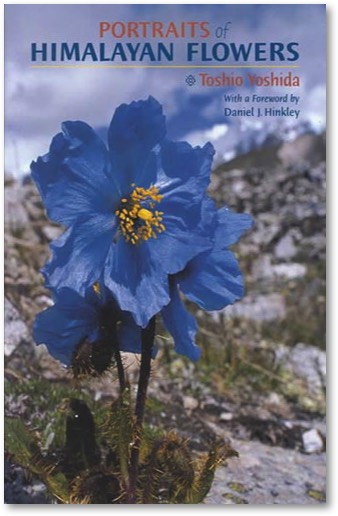
Musings » Portraits of Himalayan Flowers


Portland, Oregon
Timber Press 2002
This is a book of over a hundred colour photographs, in large format. The photographs are spectacular Everyone will enjoy them.
It is always a mistake to criticize an author for not writing the book he never intended to create, but in this instance I am venturing very gently down that path. The reason for this is that much of the value of the amazing work this man has done has unfortunately been watered down.
The book opens with a few pages of text: an introduction by the author, a dedicated botanist and plant photographer who does research at the University of Tokyo, and a foreword by the well-known nurseryman/plantsman, Daniel Hinkley. There are also a couple of pages about the history of Himalayan plant collecting by Professor Hideaki Ohba. So far, so good.
These sections lay out a little of this amazing history and the unbelievable difficulties that collecting plants in the Himalayas entails. One shudders to think of the discomfort and danger faced by botanists and plant collectors who venture into those mountains. I for one was horrified by the account of the giant leeches emerging in the brief summer months.
From what I have said so far it is hard to see what there is to criticize. Perhaps I am being churlish in expecting more. There are lots of books of beautiful pictures of flowers which need no other justification. I have to try to account for the nagging feeling of dissatisfaction which this book caused me.
It may be because I read it on the heels of the modern re-construction of an epic voyage by Frank Kingdon Ward in 1924, The Riddle of the Tsangpo Gorges. Ward was an English explorer and plant collector who first went to China in 1910 and returned to the region again and again until 1955. He wrote numerous books describing his travels and the plants he brought back. (Gazette readers may recall I reviewed his The Romance of Gardening some time ago).
The Tsangpo Gorges in Southern Tibet remained something of a mystery because of their remoteness and extreme ruggedness. Which of the mighty rivers in India began as the Tsangpo? In the early 1990s, three English plant enthusiasts, led by Kenneth Cox, re-traced Ward’s journey and clarified the geography which so intrigued him.
Cox’s book is extensively illustrated by remarkable colour photographs of the same flora which Yoshida recorded. The difference is that the pictures illuminate points in the text. Many of them are taken at the same angle which Yoshida calls the “pollinator’s view”, with the same distortions as his, but they are subordinate to the text rather than overwhelming it .
Yoshida’s plates are grouped according to plant family, a scientifically valid choice, but frustrating to anyone who wants to do some analysis or comparative review. I found that the majority of the plants in Yoshida’s book are not grown in Western gardens.
The inclusion of unfamiliar plants is a service to horticulturists, yet Professor Ohba only touches upon this point in passing.
Wonderful pictures of flowers are not sufficient to carry an entire book when the journey to reach them and the rich history of previous endeavours are only hinted at in tiny, tantalizing fragments instead of being given their rightful place. I cannot tell if the reduction of Yoshida’s extraordinary effort and heroic labour is because the author chose it that way or if an over-zealous editor decreed it. My disappointment may be because I hoped to learn a lot from such a book and it left me feeling a bit cheated.

